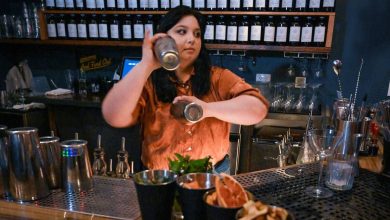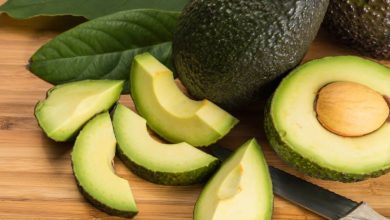Grandparents – Think Twice Before Using Your Older Corelle Dishes With The Grand Kids.

It’s not uncommon to have a set of Corelle dinnerware in the cupboard. It may have been purchased when we outfitted that cottage we bought on Lake Huron or got them from a thrift store or garage sale. Heck, we may have had them since college; they were practically indestructible. Because of that decades-long connection, it feels like a family member.
The lengthy lifespan of some of this dishware, on the other hand, may work against them. Here’s why you shouldn’t eat from older Corelle dishes—and what you can do to find out if yours is safe.
There Is An Issue With The Paint Used For The Decorative Patterns
The manufacturing process (and how it has evolved over the last many decades). Many firms utilized lead-based paints on their items before the FDA set limits on how much lead may be used in dinnerware. Those laws only went into force around 40 years ago, so if you have a set of dishes from before 1980, there might be lead in the paint. If the paint leaches, meaning it crumbles, flakes off, or mixes with the food, you may eat lead with your meal.
We don’t have to inform you that lead has some unpleasant adverse effects. It is especially dangerous to youngsters. There is no such thing as a safe level of lead in the body. So, while dish-related lead poisoning isn’t as deadly as lead poisoning from home paints or water, those beautiful designs on your Corelle might get you sick in the appropriate settings.
Corelle itself suggested in an email posted on Lead Safe Mama that any plates created previous to 2005 be used exclusively for decoration.
Why Is There Lead Or Cadmium In Dinnerware?
As you may know, the earth’s crust is made up of a variety of metals. Some are beneficial to people, while others are detrimental. Toxic metals such as lead and cadmium may be found in soil and dust all around the world.
Lead and cadmium are both used in the manufacture of dinnerware. Lead is used as a pigment in glazes to reinforce them, and cadmium gives dishes their red color. Due to health concerns, these substances have been phased out of many goods; nevertheless, they can still be found in older dishes such as Corelle ware.
Is it OK to use my Corelle dishes?
The good news is that establishing if your dishes are lead-free is straightforward.
The bad news is that you have no way of knowing whether your Corelle dishes are lead-free. That’s right: the only way to find out if your dishes contain harmful levels of lead is to submit them to a lab for analysis. And, while it may appear to be an inconvenience, the truth is that by taking this exam, you have nothing to lose—except perhaps something valuable: your health!
So, what are your alternatives? The most straightforward solution is to replace any potentially dangerous Corelle dinnerware with something else. If you want a more permanent solution, you may use a test kit, which is available at local hardware stores.
How Do You Determine Whether Your Dishes Are Lead-Free?
There are several methods to verify that your Corelle dish is lead-free.
To find out if your Corelle dinnerware contains lead, use a lead test kit for dinnerware. While it cannot offer accurate amounts of lead or cadmium, it can detect its presence.
You can also reference sites and organizations that do testing of cookware. One is called Lead Free Mama. While she does ruffle some feathers among the dish collectors, her testing methods are sound. The site’s author has a listing of many types of Corelle dish patterns that contain lead in the designs.
The best practice to avoid lead contamination, use only pure white Corelle dinnerware. Use elegant antique Corelle dinnerware as decoration or display it in your china cabinet.
How might lead have gotten into my meals via my dishes?
But how can lead and cadmium get into your food? It’s not like the dishes are on the attack. You can do a few things to guarantee that your food does not taste like lead or cadmium.
When lead-containing dishes are prepared over 350 degrees Fahrenheit (when the dish itself contains more than 5% lead), they leak more metals into meals than when they are heated at lower temperatures.
In 1996, researchers conducted a study on pre-1950s US-made ceramic dinnerware collected from antique stores and flea markets. In microwave leachates from dishes with uranium-containing glazes, copper-containing glazes, and flowery over-the-glaze decorations, they discovered dangerous lead concentrations (>3 microg/ml). According to the findings of this study, using such plates to microwave popular foods may result in unacceptably high levels of lead intake.
What Dinnerware Is Free of Lead and Cadmium?
If you’re worried about the amount of lead in your dinnerware, there’s a simple way to find out. First, it is most likely safe if it was created after 2005. Next, look for “Made in the USA” on the bottom of your plate. You may be certain that it was made with safe processes and materials if it says that.
Ceramics that have been correctly prepared should not leach lead. However, if the dishes are not sufficiently hardened and covered, the lead may leak out. Furthermore, glazes used before FDA rules included greater levels of lead. Lead poisoning may harm your health over time, especially for youngsters and pregnant women.
Is it just vintage Corelle dishes that have issues??
No! Old Fiestaware, the bright and most popular collector brand of ceramic tableware created from 1936 to 1973, contains uranium and is radioactive, according to a Smithsonian Magazine article.
Owners of vintage Corelle dishes are increasingly concerned about lead poisoning.
Not only are older Corelle dishes prone to lead contamination. Any dinnerware constructed before the 1970s was almost certainly made in China or another country where lead-painted tableware was widespread.
Lead and cadmium were used as glazes on dinnerware because they were cheap, durable, and easy to apply. Although lead was banned in all food packaging and utensils by the FDA in 2010, it is still used in some nations due to its low cost and availability in comparison to safer alternatives such as porcelain or ceramic ware with non-toxic glazes.
If you wash dishes with food residue left on them, or if you use detergents containing phosphates, which can leach out into meals when heated, lead may contaminate the food in your dishwasher (or by hand).
To See All The Vintage Corelle Dishes LSM Tested For Lead
Lead-free Mama provides terrific service. The blog’s author has been working on this issue for years, and her efforts appear to be ongoing. We will, however, not be utilizing these ancient dishes. I’m relieved to learn this piece of food safety information that no one else appears to have covered.
Click here for additional information about the Lead contained in this and other old plates.: Corelle® recommends using their pre-2005 dishes as “decorative pieces” due to concerns for high levels of Lead.
Thank you for contacting Corelle Brands. Before the 1990s, virtually all glass and ceramic ware made anywhere in the world contained Lead as a primary ingredient in the decorating fluxes and glazes. All our products have been Lead-free since the mid-2000s. Lead content has never been regulated until recently. We recommend using the items you have as decorative pieces. We hope this information is helpful.
Lead Free Mama



